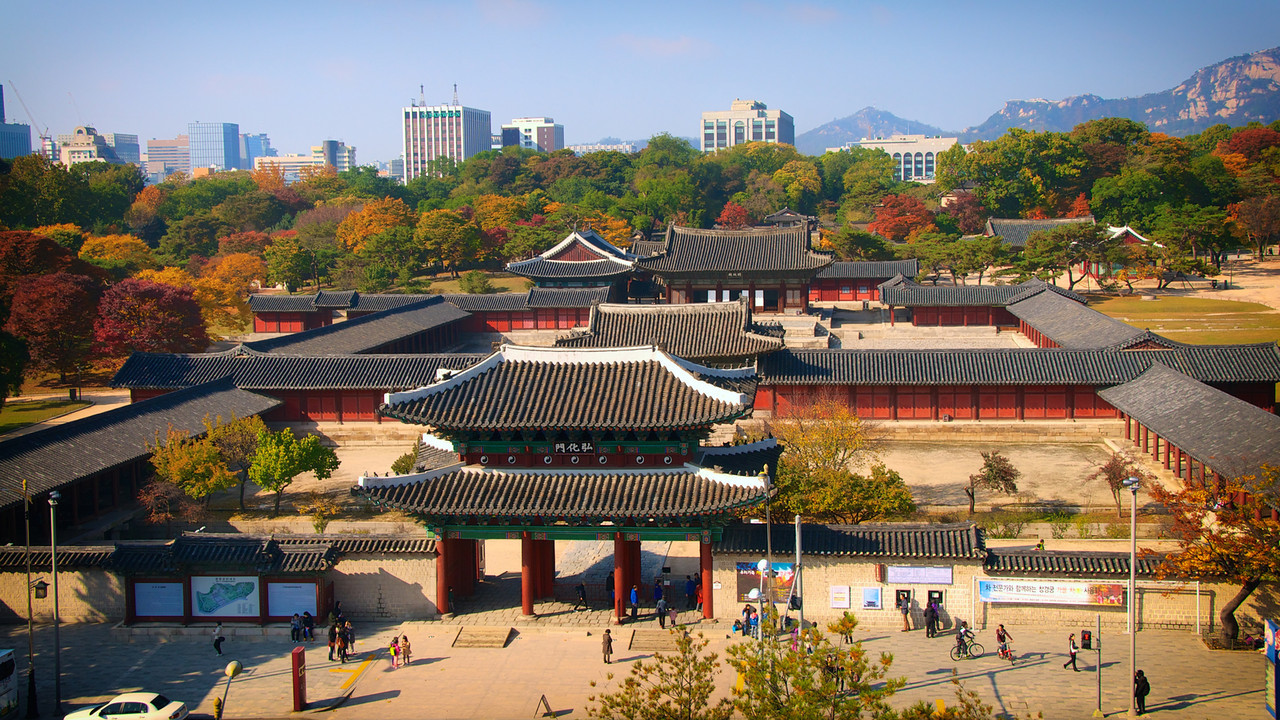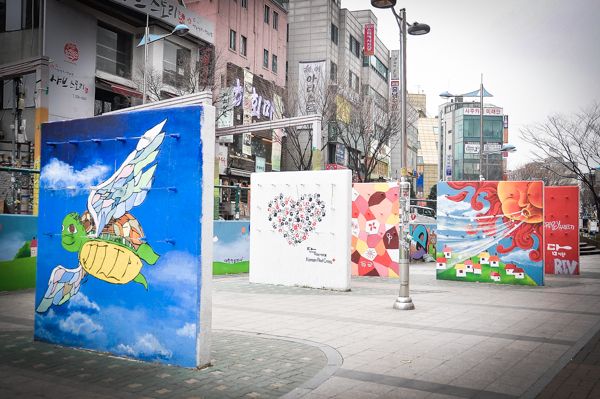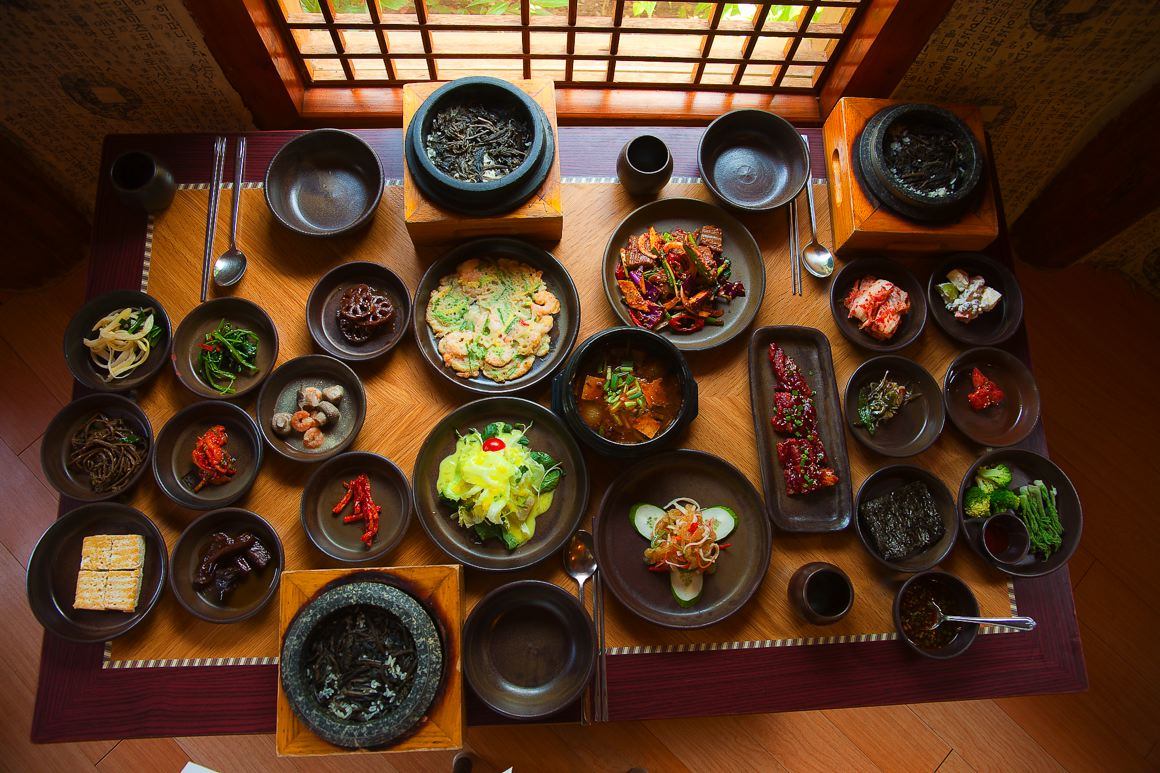See & Do in Seoul:
Seoul is a city that truly has something for everyone.
Seoulites have tried to marry their ancient traditions as seamlessly as
possible with their desire to be the most technologically advanced and modern city
in the world. There are limitless opportunities for any kind of person.
 |
| Source |
History Buffs
 |
| Source |
If you’re wanting to get a feel for how Seoul was in the
past the city has done its best to try and preserve the historic buildings and
neighborhoods.
The Ancient City Wall and Gates
If you’re wanting to explore the old Seoul a hike along the
ancient city wall is an excellent way to get a history lesson and some truly
amazing views of the city. The city wall snakes along the mountains around
Seoul. Though not fully restored, you get to see why Seoul has been such an
easy city to defend from land-based attacks! The four city gates of Seoul
(Namdaemun, Dongdaemun, Seodaemun, and Bukdaemun) have all been lovingly
preserved and restored. Originally Seoul was a completely closed off city and
could only be entered or exited through one of these four main gates or the
four much smaller lesser gates. Whenever any of the main gates were opened the
giant Bosingak bell (also still erected) would be rung. This walk offers views
of the city you can’t get anywhere else!
The Great Palaces
Korean palaces contain some of the most unique architecture
you will see. Ancient Koreans believed that palaces should flow with the
surrounding nature and interrupt it as little as possible. However, due to
Korea being controlled at different times by both China and Japan, the
marriages of Chinese, Japanese, and Korean styles create something wholly
unique. There are 5 different palaces (Gyeongbok, Changdeok, Changgyeong,
Gyeongdeok, and Deoksu) in Seoul and each palace was constructed in completely
different times in Korean history and show different eras of Korean
architecture.
Hanok Villages
Hanok villages have been either constructed or preserved in
order to give both Koreans and visitors a sense of what life and architecture
was like in old Seoul. The two largest of these are Bukchon and Namsangol.
Bukchon gives a feel of the ancient city, with winding streets, small
businesses, and still functioning homes. Namsangol is more of a museum to show
the more rural aspects of Korean life, but is surrounded by a very serene park.
Shopaholics
 |
| Source |
Clothes Markets
For the ultimate bargains you should head to the labyrinths
and massive warehouses of the two major shopping districts: Dongdaemun and
Namdaemun. Because they are situated beside two of the ancient city gates there
have been markets in these areas for centuries. You could spend weeks exploring the streets of these markets
and still not see everything there is on sale. The vendors will be more than
happy to haggle over prices and try to usher you into their stalls. You can
find something completely unique and wholly Seoul here.
Myeongdong
If you’re looking for fashionable clothes but don’t want to
break the bank then Myeongdong is the place for you. There are hundreds of
boutiques and name-brand stores as well as some wonderful street food and very
unique characters. The tightly packed streets are literally overflowing with
Koreans and tourists alike. Korea is famous for it’s cosmetics and Myeongdong
is the best place to go to stock up, offering many tourist-oriented discounts
that you can’t get anywhere else.
Upscale Shopping
If you have money to burn, look no further than Sinsa. In
Sinsa, upscale boutiques mingle with internationally famous luxury brands. If
you want to rub elbows with the rich and famous but don’t have the money to
dress like them, have a seat in an adorable café overlooking Garosu-gil street,
you might even spot your favorite K-Star!
Authentic Souvenirs
When looking for Korean-themed gifts for your friends and
family back home there is really no better option than Insadong. The main
street of Insadong is filled with artisans selling their truly uniquely Korean
wares. You can find handmade everything, from fine Korean textiles to pottery
to traditional Korean paintings. Most of the sellers are willing to haggle and
will give you deep discounts if you buy more than one item.
Outdoorsy Type
 |
| Source |
Hiking, Hiking, Hiking!
Every weekend the subways of Seoul are filled with
middle-aged Koreans flocking to the thirteen mountains surrounding the city. These
mountains range from easy to pretty difficult. A hike up Namsan is very doable
and offers some spectacular views of the city. You’re also rewarded at the end
by the best views of Seoul from Namsan Tower. Bukhansan has the widest variety of hiking trails and can
help you really work up a sweat. If rock climbing is more your style a short
subway ride out to the surrounding Gyeonggi Province offers a wealth of
locations for all ability types.
The Han River
Name the flat-land activity and it can most likely be done
at the Han River. You can rent anything from kayaks to jet skis and can rent
bicycles, tandem bicycles, or scooters to ride along the edge of the river. All
parks and hiking trails in Korea have one special amenity: exercise equipment!
There are simple machines available outdoors for stationary biking, elliptical
machines, and various tools for stretching out your city-cramped muscles.
Artistic
 |
| Source |
Hongdae Area
Hongik University (Hongdae for short) is the top Korean art
university and logically the area surrounding the school has a wealth of
galleries, outdoor art installations, and unique bars and cafes. The youth that
choose to inhabit Hongdae are bursting with energy. At night the streets are
full of performance artists and musicians. Grab a beer from a convenience store
and just spend an entire night people watching, it’s a sure way to find
inspiration!
Museums
Like any major city there are plenty of museums to explore
in Seoul. The largest museum is the National Museum of Korea. It’s a combination Korean art and
Korean history museum that regularly hosts internationally travelling exhibits.
The traditional Korean art is wholly unique to the peninsula, with it’s own
themes and trends. The layout of the permanent collections works well as an art
history lesson for those unfamiliar with Korean art. The Seoul Museum of Art
hosts many famous travelling exhibits throughout the year. The Leeum Art Museum
is the most architecturally striking museum and boasts a very diverse
collection of ancient Korean pottery as well as modern installations and
sculptures.
Galleries
Gallery areas are scattered
throughout the city, but the largest concentration of galleries is in Samcheong-dong.
This unique neighborhood has become the dating hotspot for your, hip Seoulites.
The architecture of Samcheong-dong is very striking, as modern architects
attempt to marry their creations with the surrounding traditional Korean
architecture. The modern galleries of this area give you a wonderful overview
of where Korean art is heading. You could easily spend an entire day walking
lazily through this neighborhood, popping in and out of galleries and cafes.
Foodies
 |
| Source |
Korean Food Specialty
Markets and Streets
Korean cuisine is incredibly diverse, but there are certain
dishes that Koreans pride themselves on and restaurants are constantly trying
to out-do each other in the game of “who has the best ____ in Seoul.” Nowhere
is this more prevalent than in the many cuisine-specific streets throughout
Seoul. There’s Ddokbokki (VERY thick rice noodles in spicy sauce) Street in
Sindang, Naengmyun (iced buckwheat noodle soup) District in Ojang-dong, Sundae
(blood sausage filled with noodles) Town in Sillim, and Jokbal (smoked pig’s
feet) Land in Gongdeok. Though some of these places are a little far from
central Seoul it’s more than worth it if yu want to stuff yourself with your
favorite Korean food.
Café Culture
If there’s one thing Seoulites love more than anything it’s
a cute, quirky, unique café. The city is literally bursting with cafés and,
other than the chains, no two look alike. One of the best parts about exploring
a new area of the city is finding a café to fall in love with. Many cafés fall
into the dangerous trap of focusing more on aesthetic than their actual
product, but there’s a growing call for cafés to be not only adorable but also
delicious. A similar trend is happening with café food, though much slower.
Take a book with you whenever you leave the house, because there are few more
enjoyable activities.
Non-Korean Food
Seoul is becoming more and more of a welcoming place for
international chefs, but going to western restaurants can be a bit of a gamble.
Non-Korean restaurants tend to be concentrated in areas where many non-Koreans
live. The best western restaurants are undoubtably in Itaewon and the
surrounding neighborhoods, the foreigner districts of Seoul. If’ you’re looking
more for Middle Eastern or Russian food there’s no place better than Dongdaemun.
The more upscale restaurants can be found in Gangnam and increasingly in the
City Hall area. Be warned, though. The Korean gastronomic palate might be very different from that of your home
country.
Relaxation Junkies
 |
| Source |
Koreans, Seoulites most of all, work extremely hard and are
often desperate for an opportunity to unwind but don’t have much spare time in
which to do so. This has made the “relaxation industry” and extremely
time-efficient and well oiled machine.
Jimjilbangs and Spas
The Korean public bath houses (jimjilbangs in Korean) have
been a staple of life here for generations. Though originally purely
utilitarian establishments they have since transformed into relaxation
factories. There are many jimjilbang (often having changd their names to spas)
that feature multiple levels of baths, saunas, and steam rooms with varying
properties and themes. Though jimjilbang culture can be shocking at first (the
areas in which the sexes are separated are entirely nude as no clothing is
allowed in the bathing rooms) once you get over the initial shock you’ll wonder
why you were ever nervous.
Recreational Sports
For those looking for more active relaxation techniques,
Seoul has something for you. There are hundreds or driving ranges, virtual golf
rooms, billard halls, tennis courts, swimming pools, and gymnasiums for you to
enjoy. You just need to learn what to look for in order to find them. Many
driving ranges in Seoul have blended into the city skyline (whenever you see a
massive green netting tent popping up, it’s a driving range). Most gyms also
have virtual golfing equipment but there are also entire complexes devoted to
it. Hotels always have indoor pools which you can pay to use either on a daily
or subscription basis.
City Parks
For those of us (myself included) addicted to people
watching there is no place better than Seoul’s parks. The largest, of course, being
Hangang Park, which runs the entire length of the Han river on both sides.
Though sorely in need of more trees this is an excellent park for a picnic,
game of Frisbee, or just relaxing and watching people slide by. Yeouido Park
offers more shade and more interesting landscape. Seoul Forest and Seoul Dream
Forest are the two best all-around parks, though they are less centrally
located. Grab some kimbap and your alcoholic beverage of choice (there are no
open container laws in Korea!) and happily waste the day away!
No comments:
Post a Comment